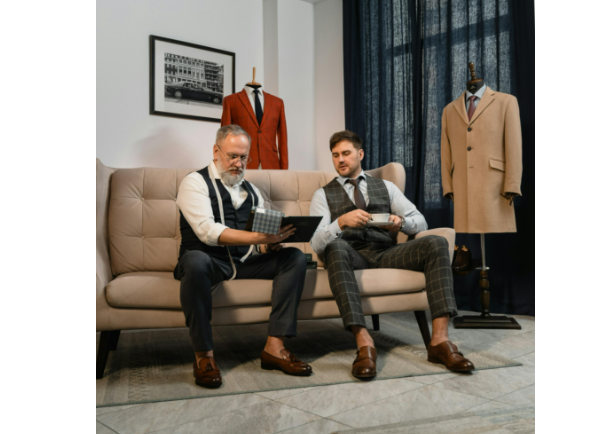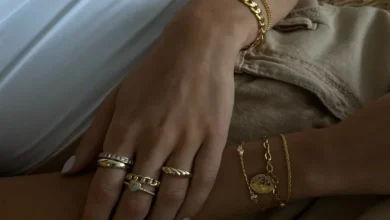What are the Challenges And Rewards of Working As a Fashion Designer: Insider Tales!

Fashion designers face the challenge of balancing creative expression with commercial viability, while rewards include fame and artistic fulfilment. High competition and rapid industry changes pose additional difficulties, yet successful designers enjoy personal brand growth and fashion influence.
Fashion designing is a profession marked by a blend of artistic talent and practical skill. The industry offers a platform for creative minds to showcase their originality and set trends. Designers must constantly innovate to stay ahead in a highly competitive market that celebrates uniqueness and style.
Crafting garments that appeal to both the aesthetic sense and the functional needs of consumers demands a deep understanding of fashion, textiles, and consumer behaviour. This career is not just about sketching beautiful dresses; it requires technical expertise, a keen eye for detail, and a solid grasp of the latest technologies influencing fashion. Despite these challenges, the allure of seeing one’s creations on runways and in-store windows compels many to pursue this dynamic and rewarding field. Embracing these hurdles often leads to success, acclaimed collections, and the power to shape the fabric of fashion itself.
The Cutthroat Competition
Breaking into the fashion industry requires more than talent. It demands grit, creativity, and a thick skin to navigate one of the world’s most competitive fields. In this high-stakes arena, every fashion designer faces significant challenges and the potential for great rewards.
Struggling To Stand Out
Fashion is an ocean of brilliant minds and stunning creations. Standing out becomes a designer’s first major battle.
- Unique designs are a must.
- Building a distinctive brand identity is critical.
- Networking with fashion icons can provide valuable exposure.
- Designers must often work tirelessly on portfolios that capture the essence of their style.
Staying Relevant In A Fickle Industry
The fashion landscape changes with the seasons, and what’s trendy today might be passé tomorrow. Designers constantly battle to stay ahead.
- Stay abreast of current trends and forecasts.
- Experiment with materials and techniques.
- Understand the market’s pulse to predict customer desires.
- Continuously reinvent one’s style and approach.
Balancing Creativity With Commerce
The life of a fashion designer is an intriguing dance between artistry and pragmatism. To succeed, designers must pair innovative ideas with the industry’s commercial realities. This balancing act demands a constant creative push while maintaining profitability and market viability.
Design Innovations Vs. Market Demands
Entering the battlefield of fashion, designers wield their creativity as a sword. Each clothing line presents a new opportunity for innovation. Yet, not every avant-garde design aligns with consumer tastes. Designers must predict trends, gauge market appeal, and blend their creative vision with what sells. This leads us to the eternal question: Do you lead the market with pioneering designs or follow the safe path of proven trends?
- Introducing novel concepts while ensuring they resonate with buyers is crucial.
- Striking a balance between distinctiveness and wearability often defines commercial success.
- Daring to be different can set trends but may also risk initial rejection in the marketplace.
The Price Of Aesthetic Versus Cost Efficiency
A design must be factored in for it to transition from a sketch to a sellable product. Materials, production, and sales channels all carry price tags. A stunning piece that cannot be mass-produced at a competitive cost struggles to find its way into consumers’ wardrobes. Designers must find alternative materials or production methods to maintain their aesthetics without inflating prices.
| Aesthetic Appeal | Cost Efficiency |
| High-end fabrics and complex designs | Materials accessible and economical for mass production |
| Handcrafted, bespoke items | Simplified designs for scalability |
| Limited edition series | Widely available and competitively priced pieces |
Designers, therefore, must cultivate ingenuity in cost management while preserving the integrity of their designs. Crafting garments that capture the spirit of fashion without breaking the bank is the hallmark of a successful fashion designer in today’s market.
Intellectual Property Woes
The realm of fashion design thrives on creativity and unique expression. Yet, designers often face Intellectual Property Woes. Protecting original designs can be as demanding as creating them. Challenges arise when navigating the murky waters of fashion law. Despite hurdles, safeguarding designs ensures recognition and financial rewards for a designer’s ingenuity. This exploration delves into the trials and triumphs of intellectual property protection in fashion.
Protecting Designs From Copycats
In the vibrant fashion world, original designs are a designer’s heartbeat. The threat of imitators looms large. Every sketch and pattern could fall prey to copycats. Vigilance is paramount. An effective strategy involves a blend of legal knowledge and proactive measures. Designers employ various tools:
- Trademarking brand names and logos – A powerful shield against unauthorized use.
- Design patents – Protect the ornamental aspects of functional items.
- Copyrights – Cover artistic expressions like prints and graphics.
- Monitoring the market – Keeps tabs on potential infringements.
Navigating The Legal Landscape Of Fashion
The legal framework in fashion is dense and complex. Designers must stay informed about the laws that impact their creative output. They often enlist legal counsel to:
- Understand the scope of their IP rights – Know what the law protects.
- Secure their creative assets – Filing for the appropriate protections.
- Take action against infringements – Enforcement is vital to deterrence.
- Negotiate collaborations and deals – Contracts safeguard against IP theft.
Success in fashion depends not only on talent but also on the staunch defence of intellectual property. It’s a nuanced path, but the reward is securing a legacy and financial success.
Sustainability Challenges
The world of fashion design is thrilling and full of creativity. Yet, it faces serious sustainability challenges. These challenges push designers to innovate not just in style but also in how clothing is made. Fashion has a big impact on our planet, and fashion designers are now looking for ways to reduce this impact.
Eco-friendly Materials And Ethical Labor
Choosing suitable materials is critical to sustainability in fashion. Designers are turning to eco-friendly options, such as organic cotton, recycled textiles, and bamboo fibres. However, finding these materials can take much work and often costs more than regular materials.
- Organic cotton: Grown without harmful chemicals.
- Recycled textiles: Reduce waste by reusing materials.
- Bamboo fibres: Fast-growing and biodegradable.
Finding ethical labor is also critical. It ensures that workers get fair pay and safe conditions. Designers must check factories regularly and build strong relationships with suppliers.
Reducing The Carbon Footprint Of Fashion
The fashion industry produces lots of carbon emissions. This contributes to global warming. Designers are tackling this issue. They look at every stage of production. This starts from raw material to delivery.
| Production Stage | Low Carbon Solutions |
| Material Sourcing | Use local and sustainable materials. |
| Manufacturing | Implement energy-efficient processes. |
| Transportation | Opt for greener shipping options. |
| Packaging | Choose recycled or biodegradable packaging. |
Reducing the carbon footprint is tricky. Designers often have to invest in new technology and think of creative ways to reuse materials. This effort helps create a greener fashion future.
Mastering The Business Of Fashion
Welcome to the exhilarating fashion world, where creativity meets commerce in a dynamic display of artistry and insight. Mastering the business of fashion is a multifaceted challenge demanding more than just an eye for design; it requires a sharp mind for the practicalities of running a successful enterprise.
Securing Funding And Managing Finances
Fashion design is an art, but even the most talented designer may need solid financial backing. A key aspect of thriving in the fashion industry is securing funding. This could mean attracting investors, applying for grants, or crowdsourcing. Once secured, the focus shifts to managing finances effectively. Keeping a tight rein on budgets while sourcing materials, paying staff, and investing in marketing is crucial for survival and growth.
- Create detailed business plans to attract investors.
- Explore grants for emerging designers.
- Monitor expenses closely; every penny counts.
Building A Brand And Marketing Strategies
A fashion designer is only as good as the recognition their brand receives. Building a strong, memorable brand is fundamental. This involves developing a distinct image and voice that resonates with your target audience.
In today’s digital world, marketing strategies are vital. Designers must leverage social media, engage in influencer partnerships, and understand SEO to drive traffic to their collections. Formulating a robust online presence complements traditional marketing and can catapult a fashion label to success.
| Marketing Approach | Goals | Tools |
| Social Media | Increase Visibility | Instagram, Facebook, TikTok |
| Influencer Partnerships | Build Credibility | Collaborations, Endorsements |
| SEO | Drive Online Traffic | Keyword Research, Content Optimization |
Fashion designers set themselves up for lasting success and artistic fulfilment by mastering these business facets.
Personal Sacrifices On The Road To Success
The path to becoming a successful fashion designer is often paved with personal sacrifices. Dedication and resilience are vital traits to thrive in this glamorous yet demanding industry. Here’s a closer look at the actual cost of success in fashion design.
Extended Hours And Relentless Pressure
The journey to fashion stardom is nonstop. For designers, the days blend into nights, and timekeeping becomes a distant memory. Sketching, sewing, and perfecting collections can mean endless hours of focus and hard work.
- Deadline-driven – Collection launches are immovable, leading to intense work periods.
- All-nighters are common during fashion week or before big presentations.
- Personal time often takes a backseat, with vacations feeling like a luxury.
Work-life Balance In A Demanding Industry
Achieving a work-life balance is a significant challenge for many designers. Personal commitments must be flexible to accommodate the unpredictable nature of the fashion world.
| Aspect | Impact on Personal Life |
| Spontaneous meetings | Less predictable personal schedules. |
| Last-minute changes | Need to adjust personal plans regularly. |
| Global travel | Time away from loved ones and home comforts. |
Designers often sacrifice family gatherings, hobbies, and wellness routines. This imbalance can be exhausting but also fulfilling when it leads to the success of a new collection.
The Thrill Of The Runway
The Thrill of the Runway captivates the heart of every fashion designer. It’s when months of hard work materialize into a tangible parade of style and innovation. The runway marks the culmination of creativity, craftsmanship, and countless hours of meticulous planning. With each step the model takes, a designer’s vision comes to life, holding the power to set trends and inspire fashion enthusiasts worldwide.
The Excitement Of Launching New Collections
Witnessing a new collection come to life on the runway is like watching magic unfold. Designers work tirelessly, sketching, draping, and stitching until their ideas become actual garments. When models showcase these creations, the audience’s applause confirms the designer’s success. This pivotal moment represents not just the launch of new pieces but also sets the stage for potential retail hits, media buzz, and securing a designer’s reputation in the fast-paced fashion industry.
The Glamour And Elation Of Fashion Shows
Fashion shows are more than mere presentations; they are spectacles of glamour and excitement. Lights, music, and decor create an ambience that transports attendees to another world. As celebrities, influencers, and industry leaders gather to witness the latest trends, the air buzzes with anticipation. For designers, the joy comes from showcasing their work and connecting with the audience on a personal level, expanding their brand’s influence, and potentially shaping the future of fashion.
Rewards Of A Fashion Career
A career in fashion design is about more than sketching and fabrics. It’s a path filled with exciting rewards. Every day in the fashion world brings new challenges. But the rewards are deeply satisfying for those with a love for style. Let’s delve into some of the most fulfilling aspects of being a fashion designer.
Personal Fulfillment And Creative Expression
Fashion designers wield the power to create. They transform visions into wearable art, and seeing their ideas come to life is a profound experience. Designers tell stories through colours, shapes, and textures. Each collection is a new chapter of imagination. This is creative expression at its peak.
- Realizing personal style visions
- Bringing unique concepts to life
- Watching original designs hit the runway
Recognition And Fame In The Global Arena
Gaining global recognition is a thrilling reward for designers. Fashion makes the world take notice. Top designers become household names. Their work is featured on magazine covers, in digital media, and across social media platforms. Success in fashion can lead to fame, influencing trends worldwide.
| Fashion Achievements | Global Recognition |
| Magazine Features | Social Media Influence |
| Red Carpet Appearances | International Awards |
Striking the balance between art and commerce defines success for a fashion designer. The journey is complex, but the rewards, in personal fulfilment and worldwide acclaim, are immense.
Conclusion
Embracing the path of a fashion designer offers a unique blend of hurdles and triumphs. Engaging creativity meets intense industry competition; relentless deadlines juxtapose the elation of runaway success. Each challenge is a stepping stone to growth, pushing boundaries and redefining style.
Ultimately, the satisfaction derived from seeing one’s visions come to life makes every obstacle worthwhile and underscores the vibrant allure of fashion design.


